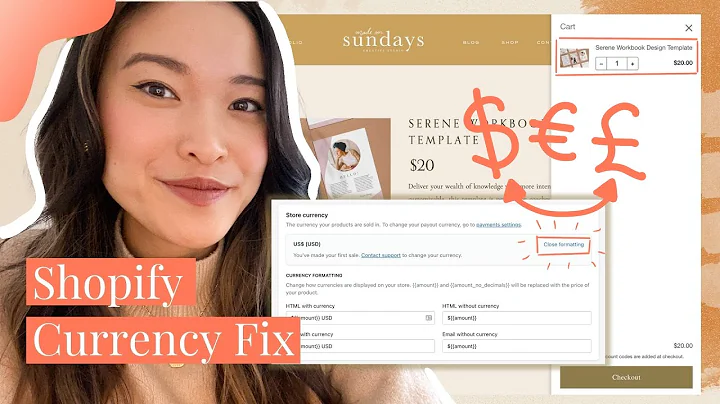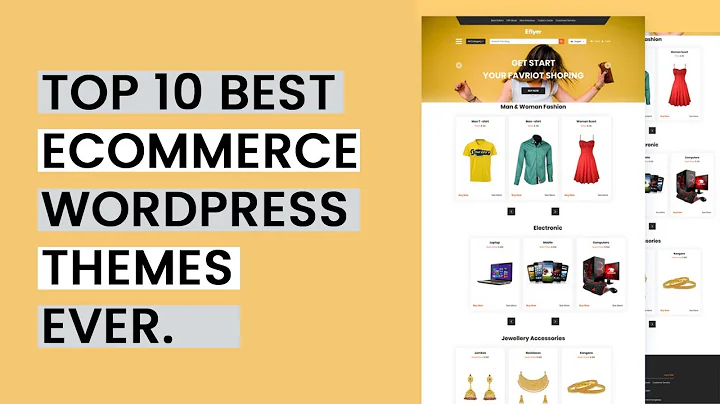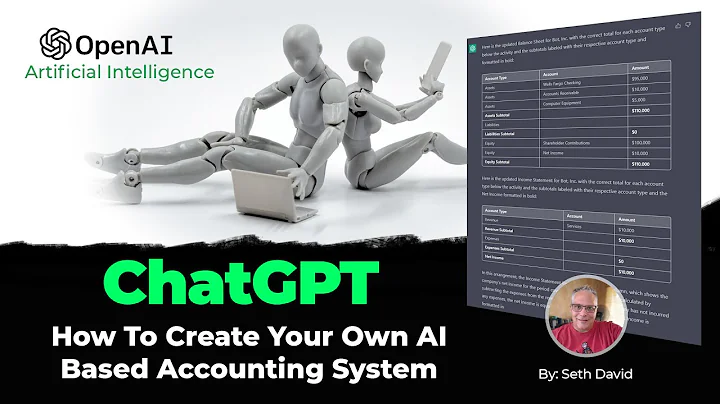Boost Your Shopify Store's Performance with Image Optimization
Table of Contents
- Introduction
- Importance of Optimizing Images for Page Speed
- Impact of Image Size and Quality on Page Load Speed
- Statistics on Page Load Speed and Conversion Rates
- Example: Speed Test on Different Shopify Stores
- Issues Identified in the Speed Test
- Defer Off-Screen Images
- Properly Size Images
- Serve Images in Next-Gen Formats
- Solutions for Image Optimization
- Conclusion
Introduction
In today's digital age, optimizing the page speed of your Shopify store is crucial to provide a satisfactory shopping experience for your customers. One of the key factors that impact page speed is image optimization. High-quality and properly sized images play a significant role in showcasing your products, establishing your brand, and influencing conversion rates. However, the size and quality of images directly affect how fast your web pages load. In this article, we will explore the importance of optimizing images for page speed in an e-commerce store and discuss how to get started with image optimization. So, let's dive in and learn how to enhance the page speed of your Shopify store by optimizing images.
Importance of Optimizing Images for Page Speed
Images play a vital role in the customer's user journey on an e-commerce store. They are not only used to showcase products but also to create a visually appealing and immersive shopping experience. However, the size and quality of images can directly impact the page load speed, which is critical for user satisfaction and conversion rates. According to statistics, the highest e-commerce conversion rates occur when the page load speed is between zero and two seconds. Additionally, approximately 70% of consumers admit that page load speed has a direct impact on their willingness to buy from online retailers. Therefore, it is clear that optimizing images is essential for maintaining a competitive edge and delivering a superior shopping experience.
Impact of Image Size and Quality on Page Load Speed
When a web browser loads a page, it needs to download and render various assets, including images. If you use large images with high resolutions on your website, it can significantly slow down the page load speed, especially on devices with slower internet connections. When an image is requested, the browser needs to download it from the server and then scale it down to fit the device's screen size. This process can be time-consuming and result in longer load times. For example, if a browser has to scale down a 1000x1000 pixel image to a 200x200 pixel size, it adds unnecessary overhead to the page load speed.
Statistics on Page Load Speed and Conversion Rates
Several statistics highlight the crucial relationship between page load speed and conversion rates in the e-commerce industry. As mentioned earlier, the highest conversion rates occur when the page load speed is between zero and two seconds. Customers expect quick and seamless browsing experiences, and any delays can lead to frustration and potential cart abandonment. Furthermore, studies show that every one-second delay in page load speed can result in a 7% reduction in conversions. Therefore, it is evident that optimizing page load speed is essential for improving conversion rates and overall business success.
Example: Speed Test on Different Shopify Stores
To demonstrate the impact of image optimization on page load speed, let's examine a speed test carried out on three different Shopify stores. The first store we will analyze is Lagos.com, a Shopify store that sells designer jewelry. While the website boasts beautiful design, it faces speed issues that directly affect user experience and potential conversions. By running Google Lighthouse speed tests on Lagos.com, we can identify areas for improvement and explore solutions to optimize image loading.
Issues Identified in the Speed Test
The speed test conducted on Lagos.com using Google Lighthouse and PageSpeed Insights revealed several issues related to image optimization. Three prominent issues were identified: deferring off-screen images, properly sizing images, and serving images in next-gen formats. Each of these issues contributes to slower page load times, decreased user satisfaction, and potential conversion rate drops. In the following sections, we will delve into each issue and provide possible solutions to address them effectively.
1. Defer Off-Screen Images
Lighthouse test results indicated that Lagos.com could benefit from lazy loading off-screen and hidden images. Lazy loading is a technique that defers the loading of non-critical resources, such as images, until they are needed. By implementing lazy loading, the browser only loads images as they appear on the user's screen during scrolling. This approach significantly reduces the initial page load time, allowing for a faster and smoother user experience. However, implementing lazy loading typically requires modifications to the website's theme or the use of specific Shopify apps. Exploring these options can help improve page load speed and overall website performance.
2. Properly Size Images
Another issue identified in the speed test was the need to serve properly sized images. When web browsers load images, they need to download and scale them to fit the required dimensions on the user's screen. If the original images are excessively large, this resizing process can consume valuable time and resources, leading to slower page load times. To address this issue, it is crucial to resize images to the appropriate dimensions. Determining the necessary image size is possible by utilizing Chrome Developer Tools and analyzing the intrinsic and rendered sizes of images. Once the desired dimensions are established, image resizing tools like Befunky.com can be used to optimize image sizes before re-uploading them to the Shopify store.
3. Serve Images in Next-Gen Formats
The speed test also indicated the importance of serving images in next-gen formats, such as WebP and AVIF. These formats offer better compression and faster downloads compared to traditional formats like JPEG and PNG. By adopting next-gen image formats, browsers can download and serve images more efficiently, leading to improved page load times and reduced data consumption. Converting images to WebP or AVIF formats can be achieved using online tools like conversio.com. Additionally, further image compression can be accomplished through tools like TinyPNG, ensuring optimal image optimization.
Solutions for Image Optimization
To optimize images effectively and enhance the page speed of your Shopify store, several solutions can be implemented. Firstly, utilizing a well-designed and optimized Shopify theme, such as the Shopify Dawn theme, can solve many image-related issues out of the box. These themes incorporate lazy loading, proper image sizing, and serving images in next-gen formats, providing a solid foundation for page speed optimization. Alternatively, hiring a Shopify developer or utilizing Shopify apps can help address image optimization requirements for custom themes or larger-scale stores.
Conclusion
In conclusion, optimizing images is a critical aspect of improving the page speed and user experience of a Shopify store. By minimizing image file sizes, serving images in appropriate formats, and implementing lazy loading techniques, businesses can significantly enhance their website's performance and conversion rates. As customers' expectations for fast-loading websites continue to grow, prioritizing image optimization becomes essential for success in the competitive e-commerce landscape. So, take the necessary steps to optimize images on your Shopify store, and provide your customers with a seamless and enjoyable shopping experience.
Highlights
- Optimizing images is crucial for improving the page speed and user experience of a Shopify store.
- High-quality images play a significant role in showcasing products, establishing the brand, and influencing conversion rates.
- Large image sizes and low-quality images can significantly slow down page load speed and impact conversions.
- Statistics show that faster page load speed leads to higher conversion rates.
- Conducting speed tests using tools like Google Lighthouse can help identify image optimization issues.
- The identified issues include deferring off-screen images, properly sizing images, and serving images in next-gen formats.
- Solutions for image optimization include implementing lazy loading, resizing images to appropriate dimensions, and converting images to next-gen formats.
- Choosing a well-designed Shopify theme like Shopify Dawn can solve many image-related issues.
- Hiring a Shopify developer or utilizing Shopify apps can address image optimization requirements for custom themes or larger-scale stores.
- Prioritizing image optimization ensures a seamless and enjoyable shopping experience for customers.
FAQ
Q: Why is optimizing images important for page speed on a Shopify store?
A: Optimizing images is vital for improving page load speed, which directly impacts user experience and conversion rates. Large image sizes can significantly slow down website performance, leading to potential customer frustration and cart abandonment.
Q: How does image size and quality affect page load speed?
A: Larger image sizes require more bandwidth and processing power to download and render, resulting in slower page load times. Low-quality images can also affect load speed if they contain excessive compression artifacts or pixelation.
Q: What statistics highlight the connection between page load speed and conversion rates?
A: Studies indicate that the highest conversion rates occur when page load speed is between zero and two seconds. Additionally, every one-second delay in page load speed can lead to a 7% reduction in conversions.
Q: Can Shopify themes help optimize images for page speed?
A: Yes, many well-designed Shopify themes incorporate image optimization techniques like lazy loading, proper image sizing, and serving images in next-gen formats. Themes like Shopify Dawn are developed by Shopify's own team and prioritize image optimization.
Q: How can I resize images to optimize them for page speed on my Shopify store?
A: By utilizing tools like Chrome Developer Tools and online image resizing services like Befunky.com, images can be resized to the appropriate dimensions. Resizing images ensures they fit the required display size, minimizing unnecessary load times.
Q: Are there Shopify apps available to handle image optimization at scale?
A: Yes, there are Shopify apps that specialize in image optimization. However, it is important to choose apps with good reviews, responsive customer service, and lightweight functionality to avoid negatively impacting your store's performance.
Q: How can I improve the image compression on my Shopify store?
A: Converting images to next-gen formats like WebP or AVIF can significantly enhance image compression and reduce file sizes. Online tools like conversio.com can help convert images, and further compression can be achieved with tools like TinyPNG.
Q: What are the benefits of lazy loading off-screen images?
A: Lazy loading defers the loading of off-screen and hidden images until they are needed, reducing initial page load times. By only loading images as they appear on the user's screen during scrolling, lazy loading enhances the overall page speed and user experience.
Q: How can I implement lazy loading on my Shopify store?
A: Lazy loading can be implemented through Shopify themes that support this feature out of the box or by hiring a Shopify developer to integrate it into your custom theme. Alternatively, there are Shopify apps available that can handle lazy loading for larger-scale stores with numerous products.
Q: Can serving images in next-gen formats improve page load speed?
A: Yes, next-gen image formats like WebP and AVIF offer better compression and faster downloads compared to traditional formats like JPEG and PNG. By serving images in next-gen formats, browsers can download and render images more efficiently, resulting in improved page load times.






















